For a nourishing, healthy smoothie with microgreens, my quick Microgreen Smoothie is vegan-friendly and perfect for moms, kiddos, and anyone else who could benefit from more nutrient-dense foods (that's everyone!).
If you enjoy refreshing and nutritious smoothies, try my mango moringa smoothie or delicious microgreens smoothie!
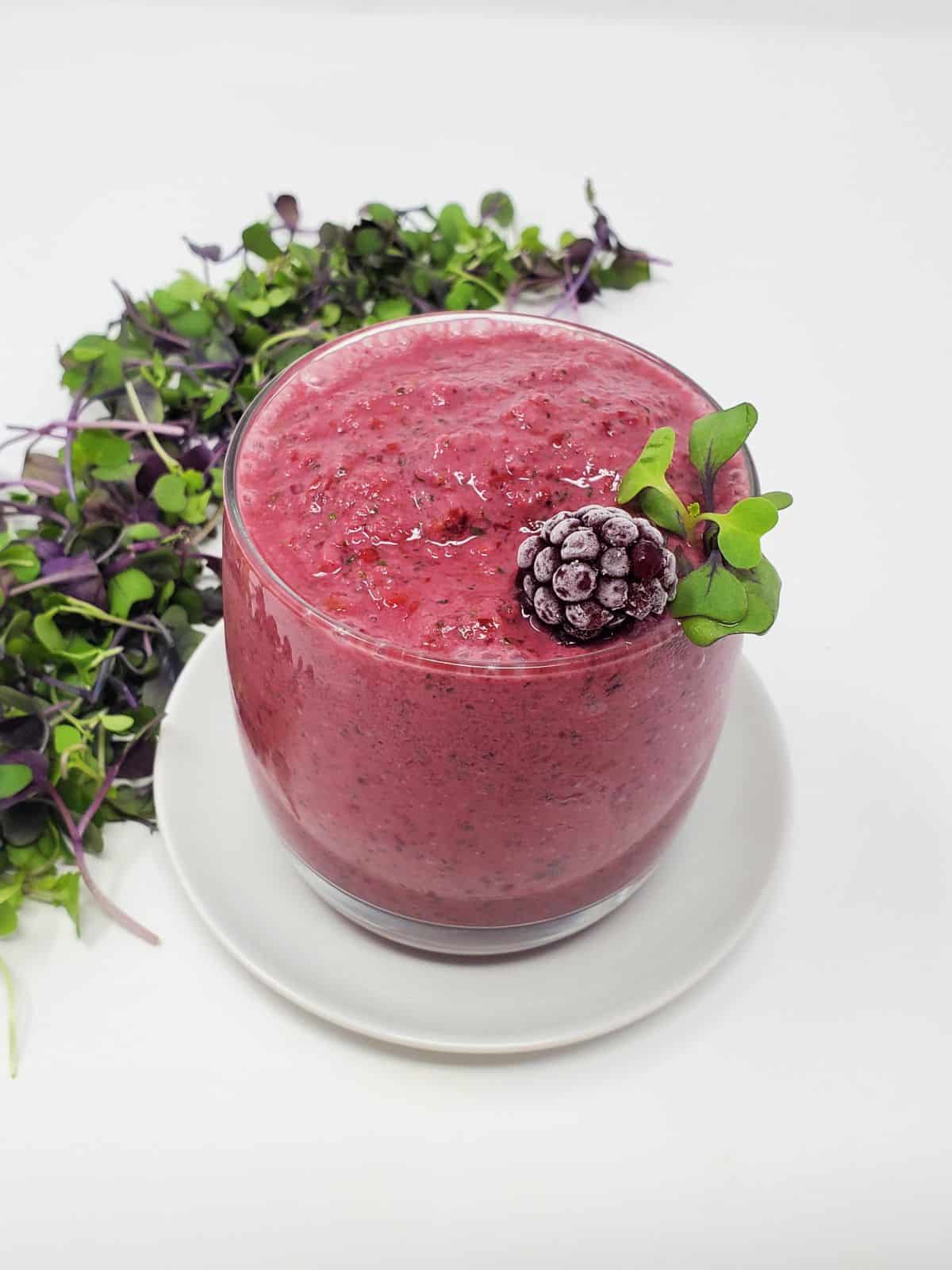
Jump to:
About this recipe
What are Microgreens?: often confused with sprouts or shoots, which they fall in between, microgreens are a type of baby plant which offer more nutrient-dense health benefits than their fully-grown counterparts.
Also often called micro vegetables or micro herbs, the benefits of microgreens vary by type, but are similar to those of the vegetables or herbs which they'd become if left to continue growing, and they go great in any number of smoothies.
Antihistamine Ingredients: This microgreen smoothie recipe is my way of easily sneaking more nutrients into my diet while still satisfying my sweet tooth. Not only does it feature several antihistamine foods, but it also contains a scoop of plant protein powder to make it even more filling.
Ingredients
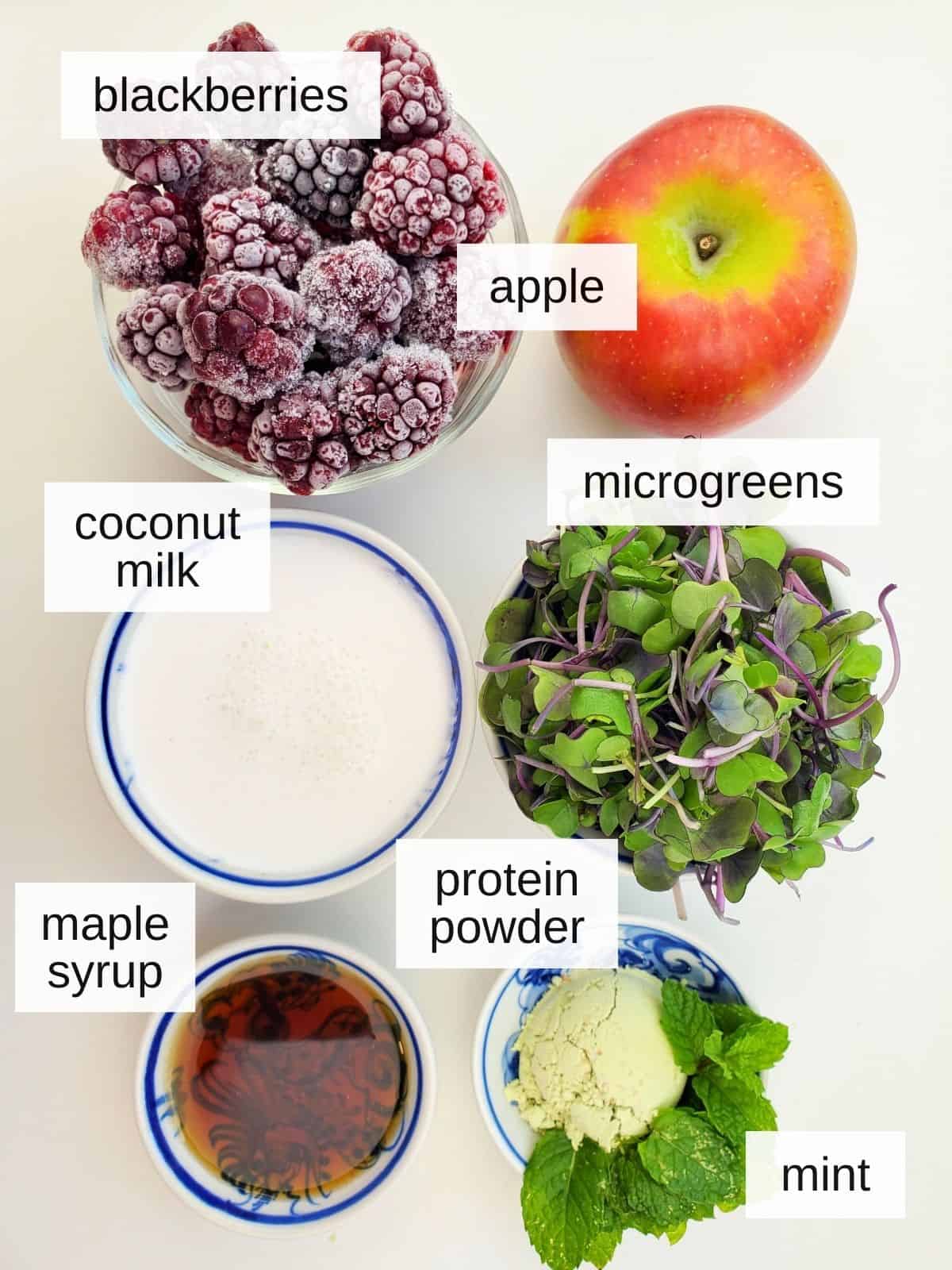
Blackberries: these are a great pairing with microgreens, as their own mild bitterness balances out well with the greens.
Apple: any type of apple will do, but a small sweet type of apple is best.
Microgreens: you can use any kind you'd like; I prefer a blend, but you can also use pea shoots for a DAO boost to break down histamine.
Coconut Milk: this adds creaminess and balance to the microgreen smoothie, covering up the mild bitterness from the other nutrient-rich ingredients.
Protein Powder: while optional, I really like using pumpkin seed protein, though you can use any type of protein powder you tolerate.
Maple Syrup: this is just for sweetening the smoothie, so if you tend to be sensitive to sweeter flavors, just leave it out.
Fresh Mint: pairing beautifully with the blackberries, this mint also helps to disguise th emild bitteerness of the microgreens.
How to make a microgreens smoothie: step-by-step instructions
Step 1. Wash and dry your microgreens, and peel and slice your apple into chunks, removing the core.
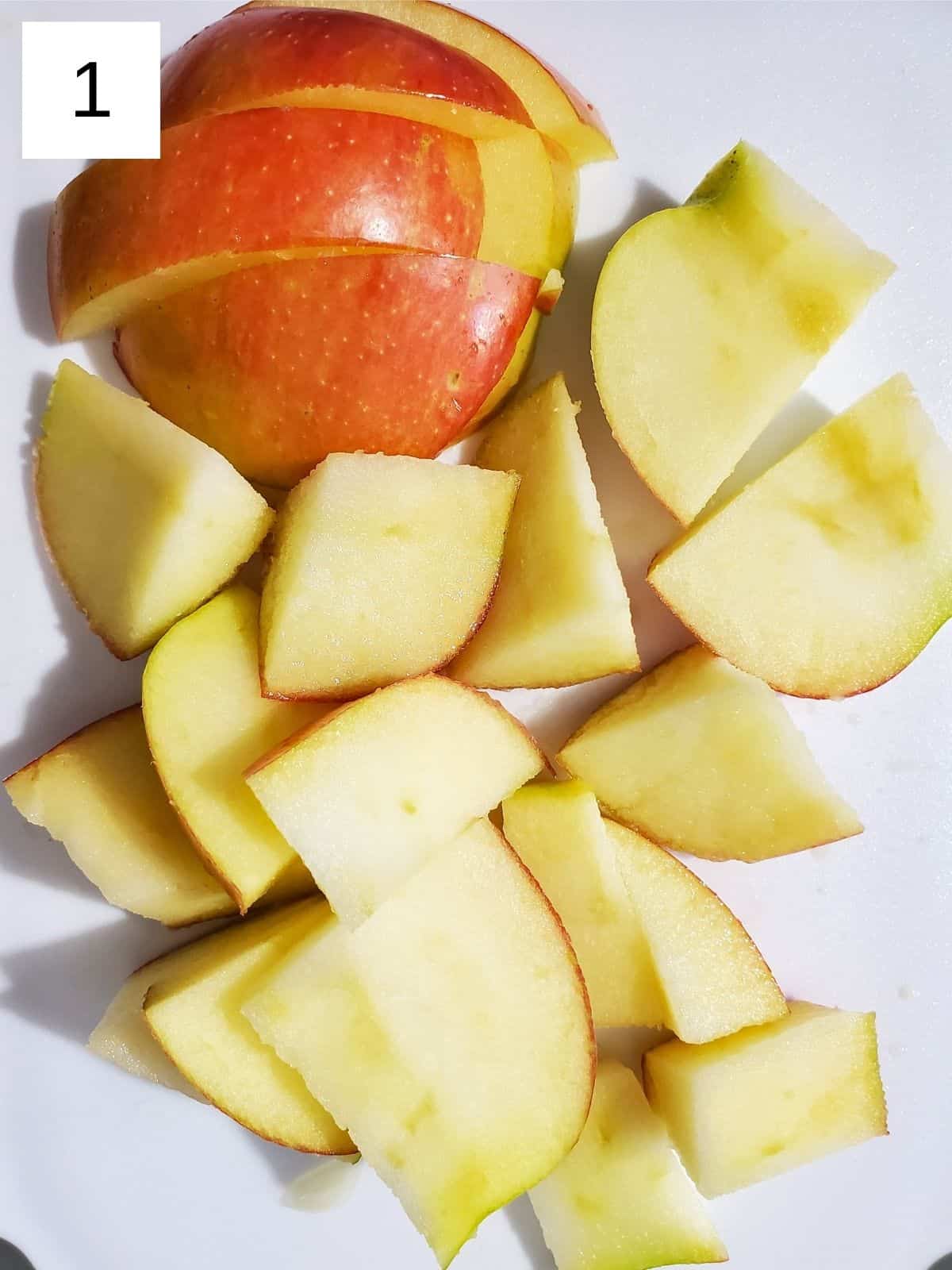
Steps 2 & 3. Next add everything to your blender and pulse several times to start breaking down the ingredients, making each pulse a bit longer than the last, and then blend on high for 20-30 seconds, until all the fruit is smooth, and your microgreen smoothie is ready!

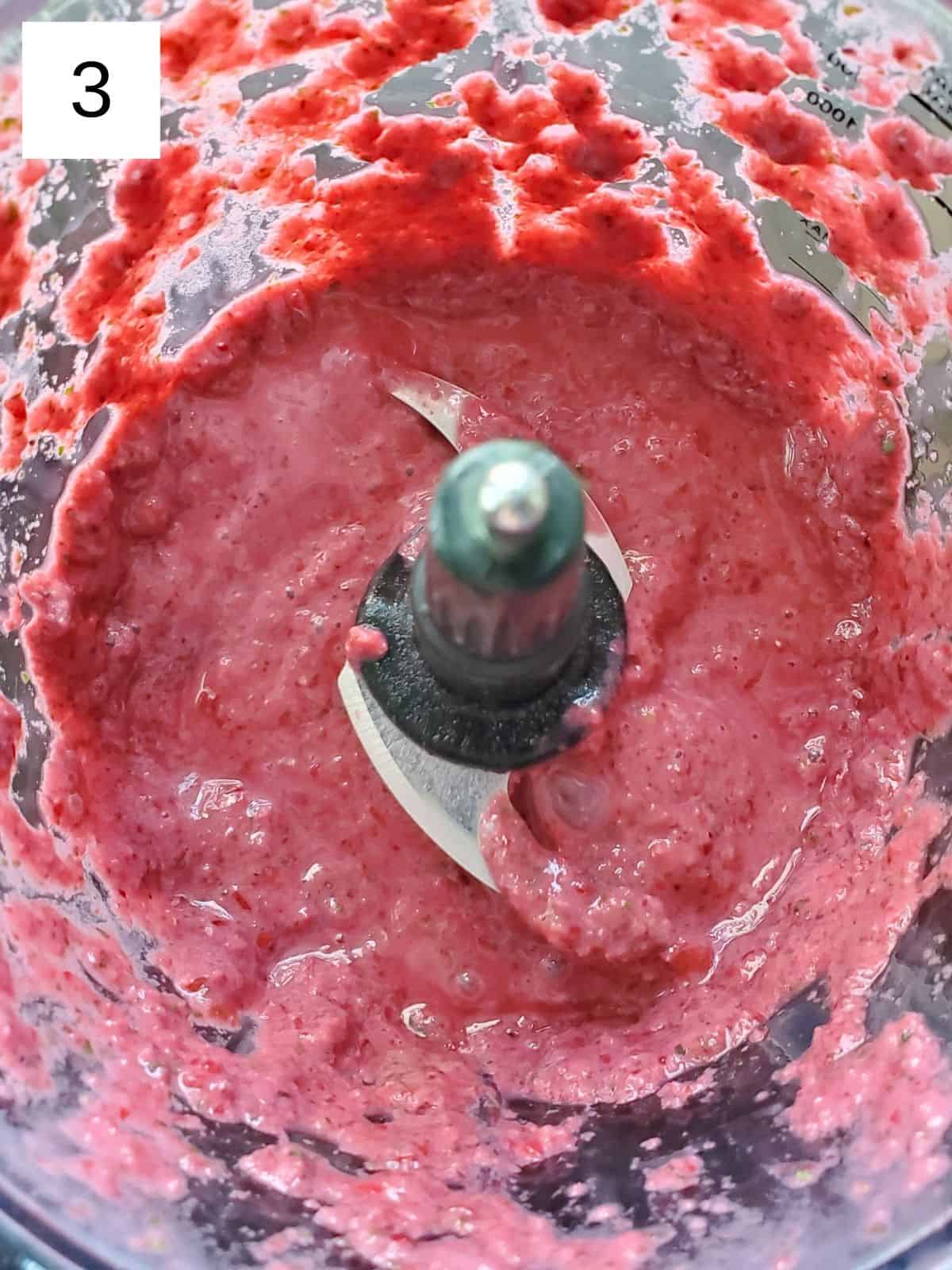
Recipe notes & tips
Swapping Fruits: You can use any type of fruit you tolerate to make microgreens smoothies, but if you want to swap out the blackberries for anything, I reccomend another berry, and for the apple I'd use another mild fruit like a pear.
Alternate Milk: This micro green smoothie goes well with oat milk, almond milk, or water, all of which can be frozen into ice cubes and blended for an even frostier smoothie (especially if not using frozen fruit).
Freezing & Storing: if you're not eating low histamine, you can refrigerate this smoothie with microgreens for up to 72 hours, though after about two days it may become a bit soggy and the textural blackberry seeds will soften. For a freezer smoothie, you can keep this frozen for up to 3 months without losing nutritional value.
Which Microgreens to Use?: I prefer to use a rainbow mix of microgreens in a smoothie, but pea, broccoli, or radish microgreens would also pair very well with these flavors.
Other smoothie recipes to try
- Creamy Mango Smoothie
- Golden Mango Moringa Smoothie
- Creamy Iron-Rich Smoothie
- Super Antihistamine Smoothie Recipe
- Low Histamine Green Smoothie
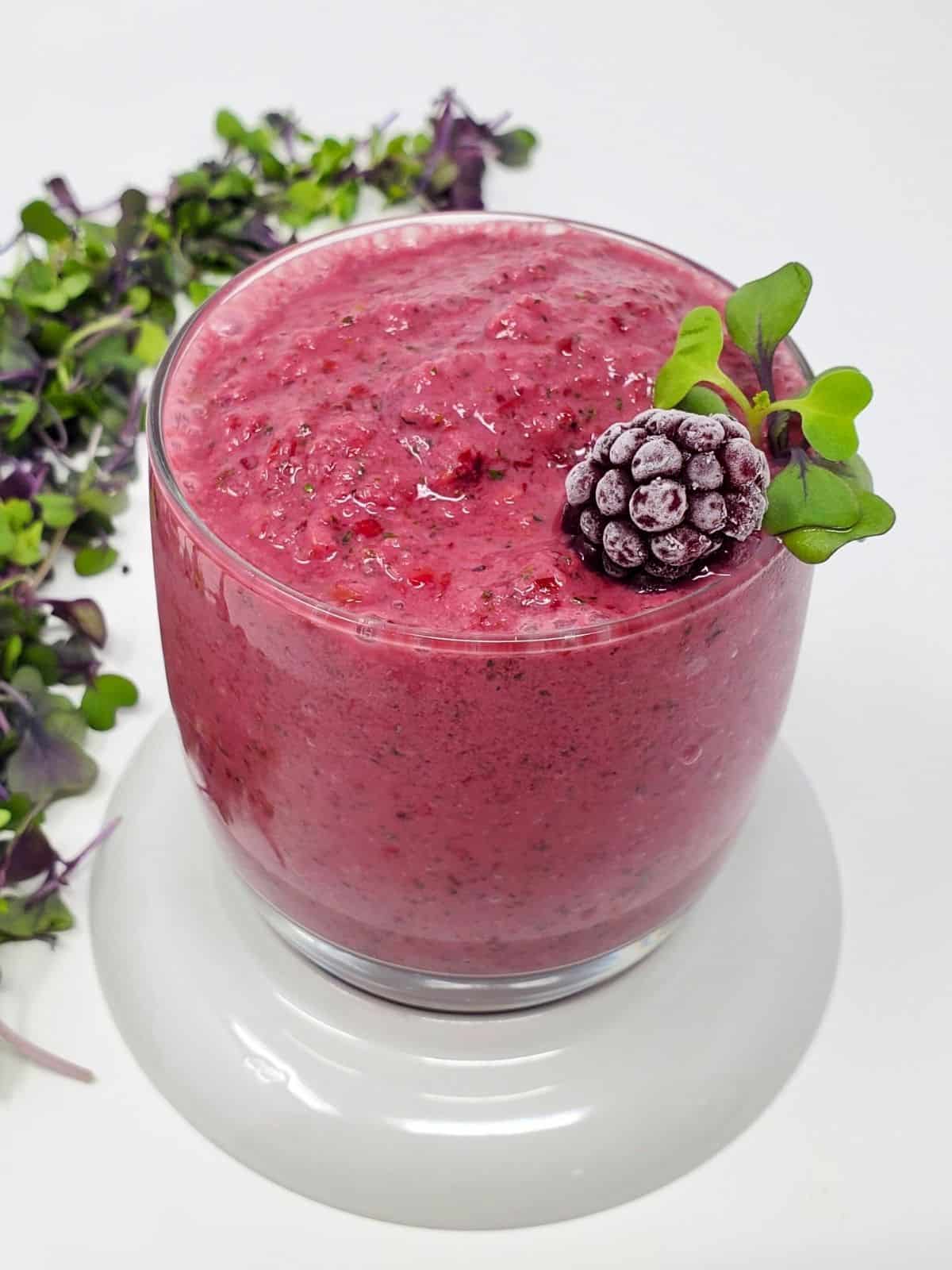
Microgreens Smoothie FAQ
The best microgreens for smoothies include kale, broccoli, and radish, because they're packed with nutrients like the antioxidant sulforaphane, and can add a fresh flavor to smoothies without overwhelming bitterness.
Yes, you can blend microgreens. They can be added to smoothies, soups, or used as a garnish, though I really like adding them to red leaf salads.
Microgreens are generally more nutrient-dense than mature plants, including spinach, which is still a good source of vitamins and minerals if you can tolerate it. However just like any plant, the nutrient content of microgreens varies depending on the type of seed and growing conditions, including the quality of the soil.
Pea shoots have the most protein of any microgreen, with up to 35% protein by weight, in addition to being a great source of histamine-degrading DAO.
Microgreens that are anti-inflammatory include basil, beet, and parsley, but really any microgreens with bright colors will contain a large proportion of antioxidants, which help combat inflammatory oxidation in the body.
There is no set amount of microgreens that one should eat per day, though adding a handful to meals can boost nutrient intake and act as one serving of vegetables per day. Personally, I try to eat one ounce of microgreens per day.
As always, if you like the recipe, I really appreciate a 5 star review or comment!
📖 Recipe

Easy Microgreens Smoothie Recipe
Ingredients
- 1 Cup microgreens of choice loosely-packed
- 1 Cup frozen blackberries
- 1 small apple cored & sliced
- ½ cup coconut milk more as needed
- 1 sprig fresh mint 7-10 small or 5-6 large leaves
- 1 Tablespoon maple syrup optional
- 1 Tablespoon protein powder optional
- pinch of salt optional
Instructions
- Wash and dry your microgreens, and peel and slice your apple into chunks, removing the core.
- Next add everything to your blender and pulse several times to start breaking down the ingredients, making each pulse a bit longer than the last, and then blend on high for 20-30 seconds, until all the fruit is smooth, and your microgreen smoothie is ready!

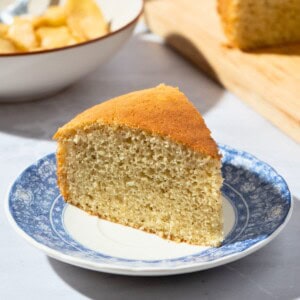











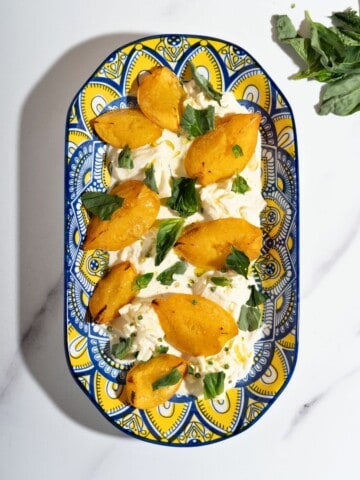
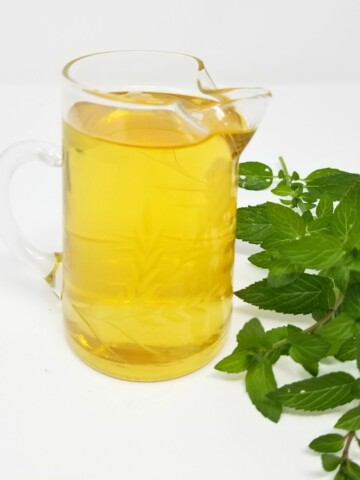

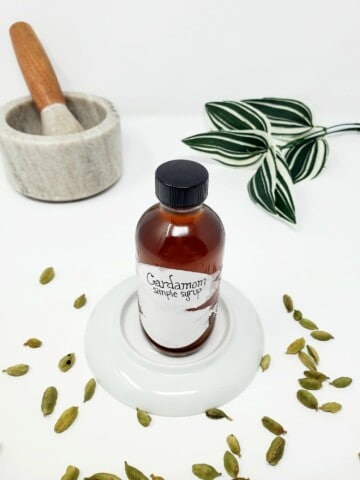
Comments
No Comments